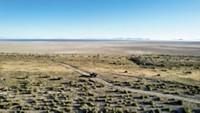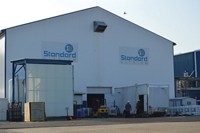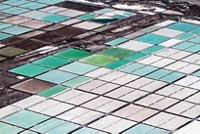Advertisement
Grab your lab coat. Let's get started
Welcome!
Welcome!
Create an account below to get 6 C&EN articles per month, receive newsletters and more - all free.
It seems this is your first time logging in online. Please enter the following information to continue.
As an ACS member you automatically get access to this site. All we need is few more details to create your reading experience.
Not you? Sign in with a different account.
Not you? Sign in with a different account.
ERROR 1
ERROR 1
ERROR 2
ERROR 2
ERROR 2
ERROR 2
ERROR 2
Password and Confirm password must match.
If you have an ACS member number, please enter it here so we can link this account to your membership. (optional)
ERROR 2
ACS values your privacy. By submitting your information, you are gaining access to C&EN and subscribing to our weekly newsletter. We use the information you provide to make your reading experience better, and we will never sell your data to third party members.
Energy Storage
Bolivia picks Chinese firms for $1 billion lithium project
The country wants to develop its largely unexploited lithium resources
by Matt Blois
January 24, 2023

A group of Chinese firms is partnering with YLB, Bolivia’s state-owned lithium mining company, to build a $1 billion project to exploit Bolivia’s large and mostly untapped lithium resources.
In 2021, YLB started soliciting proposals to mine Bolivia’s lithium using direct lithium extraction (DLE), a set of technologies that use sorbents, membranes, or other materials to chemically remove lithium from salty brines. It received submissions from companies in Argentina, China, Russia, and the US.
YLB has announced that it will move forward with a group that includes the battery company Contemporary Amperex Technology Co. Ltd. (CATL), CATL’s recycling subsidiary BRUNP, and the mining company CMOC. They aim to construct two DLE plants, each capable of producing 25,000 metric tons (t) of lithium carbonate annually for use mainly in electric vehicle batteries.
It’s unlikely the project will hit that target, says Andy Leyland, founder of the battery supply chain consultancy SC Insights. He says local opposition and changes in political leadership have stopped Bolivian lithium projects in the past, and those factors remain a challenge for this venture.
Joe Lowry, a consultant to the lithium industry, also has doubts that the project will succeed, noting that companies have been trying to mine Bolivia’s large lithium resources for decades. “They never seem to finalize a deal,” he says.
Bolivia has 21 million t of lithium resources, more than any other country, according to the US Geological Survey. YLB does extract some lithium using conventional brine evaporation but so far hasn’t achieved large-scale production. Neighboring Argentina and Chile, meanwhile, together account for close to 40% of the world’s lithium production.
In addition, Leyland says, relying on DLE is risky because the technology has not been proven at large scale. None of the companies in the Chinese group have produced lithium using DLE, and Leyland says they may end up outsourcing the technology to another firm. Some of the seven firms that lost out, such as Lilac Solutions and Fusion Enertech, do have DLE technology. “Even if it starts working at a pilot plant . . . you’ve got challenges when you scale things,” he says.
At a press conference in La Paz, Bolivia, the group didn’t reveal much information about its technology but claimed it could extract 90% of the lithium from brines.
Leyland says it’s worth noting that CATL is the world’s largest lithium chemical consumer, and the company is highly motivated to secure supplies to fuel its battery business. “If it works, the taps are open,” he says. “They need the lithium.”





Join the conversation
Contact the reporter
Submit a Letter to the Editor for publication
Engage with us on Twitter